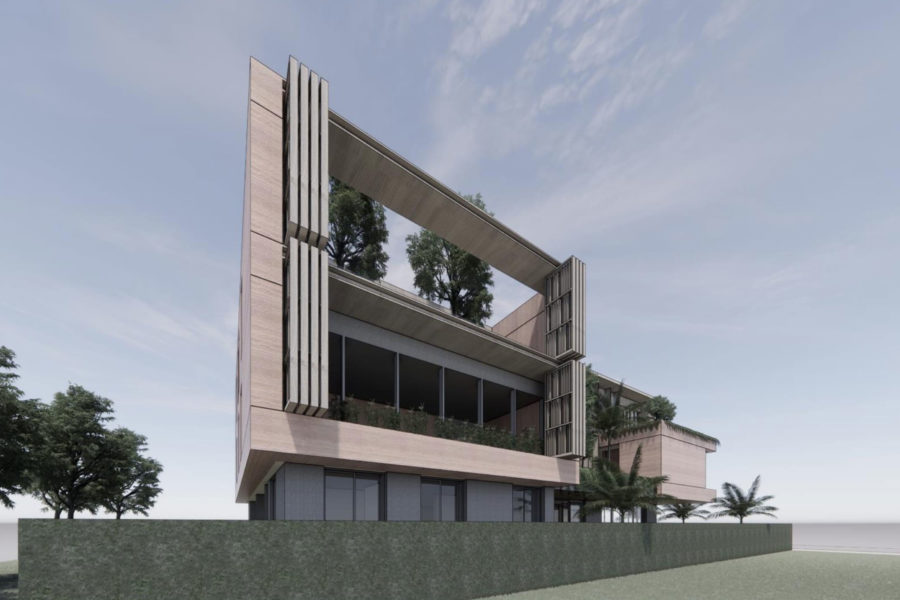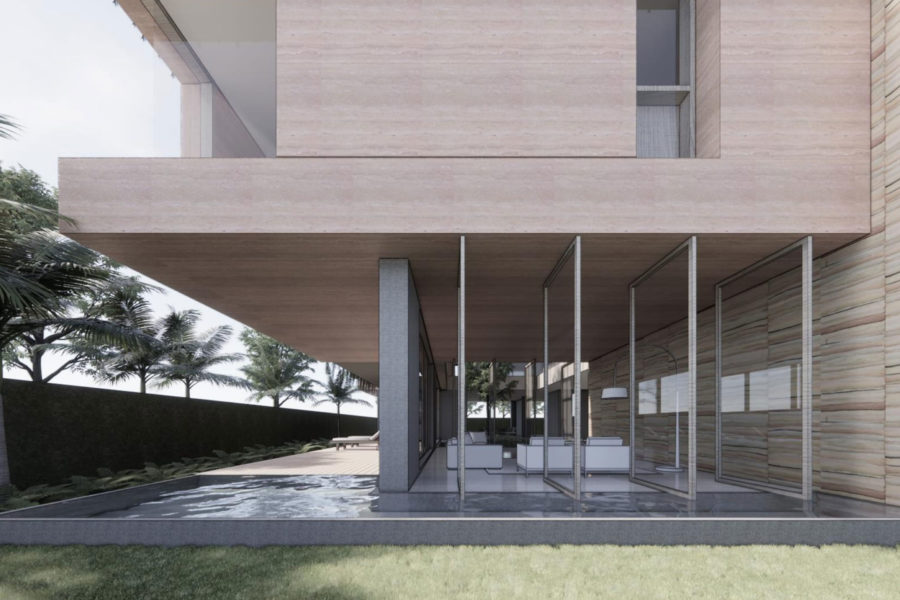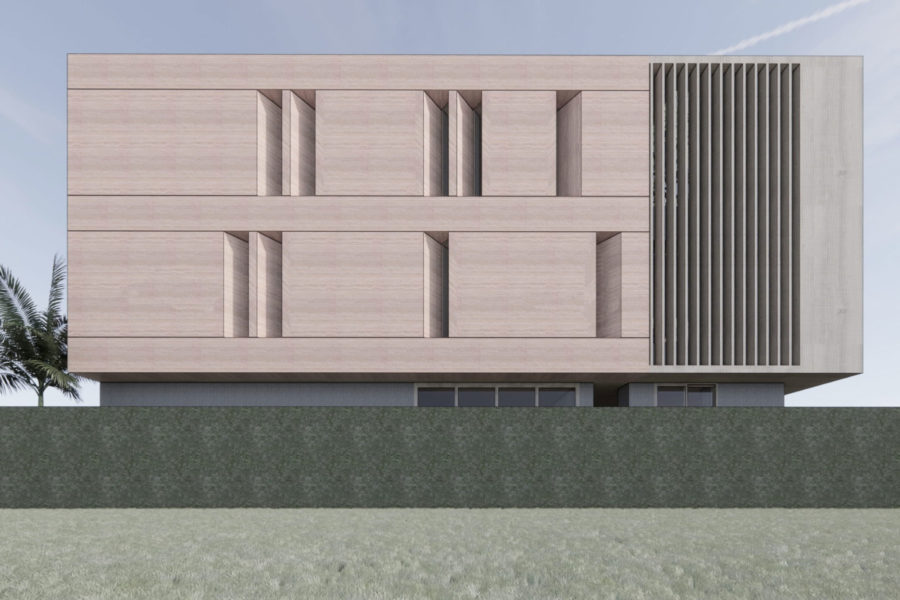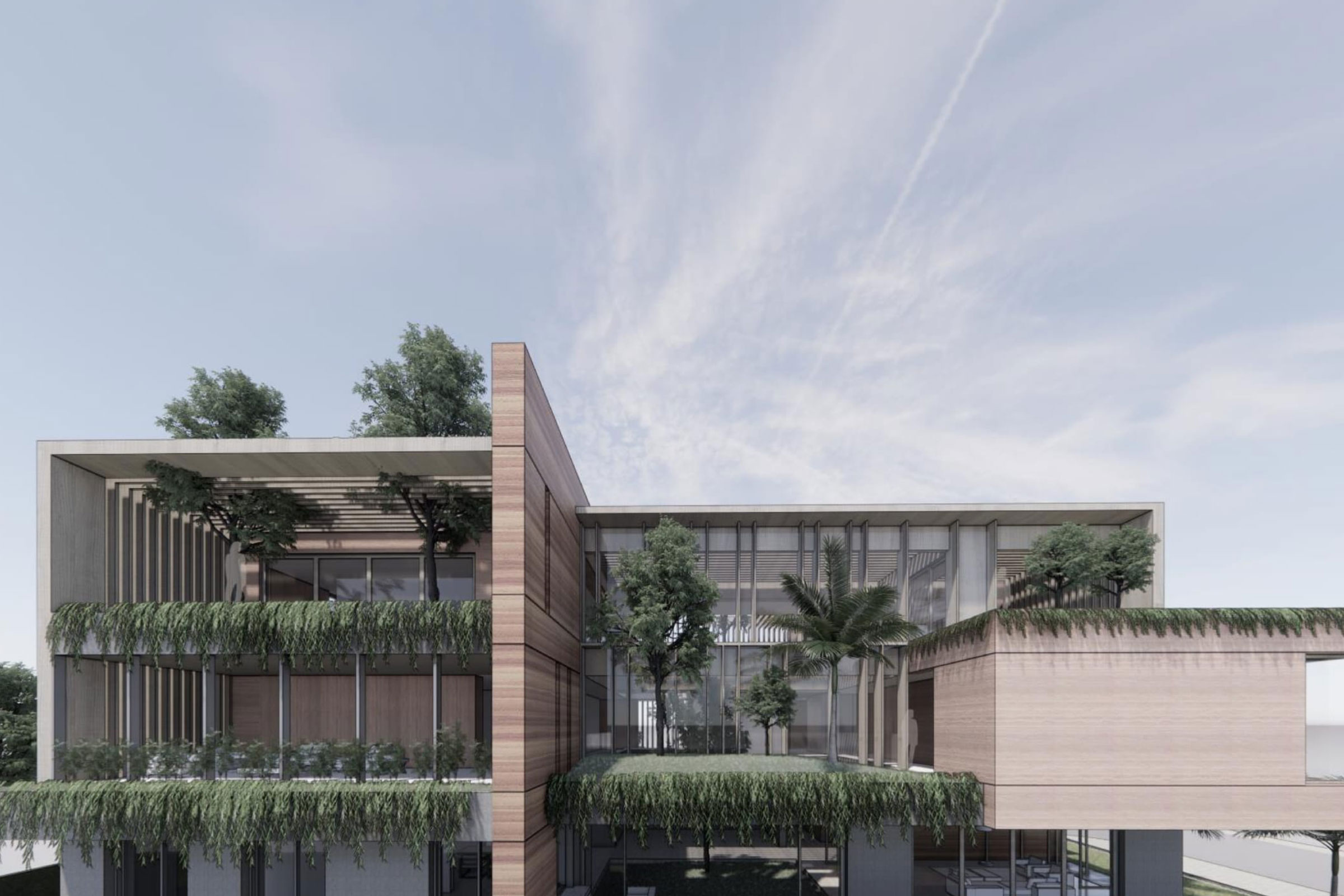Story at a glance:
- Biomimicry is the imitation of natural biological designs or processes in engineering or invention.
- B+H Architects says we can use biomimicry as a lens to learn and shift the way we think about design.
- Mature provides the ultimate engineering systems to sequester carbon, regulate temperature, purify the air, and more.
Twenty years ago, if I looked at a forest, I would’ve told you that I see trees, some brush, a pathway, and, generally, a very typical forest scene. I suspect many others would as well.
Now I see ancient elders that have long-lasted climate change. Material designers, creating facades that adapt, breathe, shed, and expand with their environment. Chemists, making incredible biodegradable solar harvesters that decompose in a circular economy. I see towers, pumping water up hundreds of feet without any electricity or mechanical devices. And I see a community connected through an underground mycelium network—sharing information, resources, and materials to support the health and diversity of the larger system. In a forest I see genius solutions for how to thrive on this planet.
Biomimicry is innovation that is inspired by nature. And it’s all around us. It’s Velcro that was inspired by the hooking mechanism of the burs that stick to your pants while you hike. It’s copying the bumps of the humpback whale fin to make wind turbine blades that are more efficient, run at slower wind speeds, and are quieter than a traditional turbine blade. It’s Pax’s impeller or Apeel’s biodegradable fruit skin. It’s about recognizing that for 3.8 billion years nature has been refining solutions for how to thrive on this planet.
After 20 years in the field of biomimicry, I now see the forest so much differently.
Can we move from “doing less harm” to once again becoming a contribution?
Humans are not a bad species; we are just a very young one. On an evolutionary timeframe, nature has been designing over billions of years, and humans, well, we have barely just arrived. Yet in that time we have risen to be a dominant species with destructive capabilities and are now at the risk of wiping ourselves off this planet. It is like we’re in an adolescent stage where we seem to be fighting against the world and convinced that we are winning.
We are not.
The idea of “doing less harm” suggests humans are fundamentally a problem for nature. This is one area that biomimicry will help us shift. When we design by drawing on nature we realize that, fundamentally, we are a part of nature. Biomimicry shows us first that nature designs solutions to very similar problems as us, with the same basic resources and context, but just with very different processes—packaging, transportation, structures, creating color, moving through fluids, pumps, agriculture.
Our breath feeds trees, our effluent feeds wetlands, and our bodies feed the soil. Once we drop the facade that we are somehow separate from nature and that, in fact, nature needs us and could teach us, we can use biomimicry as a lens to learn. We need nature to save ourselves.
At no cost to us, nature provides the ultimate engineering systems to sequester carbon, regulate temperature, dissipate storm and energy gradients, store and treat water, purify the air, produce oxygen, reduce noise, provide soil, and grow food. The World Bank estimates protecting and enhancing ecosystem services could prevent global economic losses of US $2.7 trillion every year. And the more we disrupt intact ecosystems—which have taken hundreds, if not thousands of years to refine their systems to be the most effective at these ecological services—the more we put our own species’ survival at risk.
Our actions indicate that we have little regard for the genius of nature, nor her value in keeping our planet relatively stable. But when we start to explore how we can emulate nature to improve our built environment, we will see that the most effective way we will mitigate climate change will be by keeping ecosystems intact. That is, an intact forest or wetland is worth so much more than a carbon-neutral building.
What are the barriers to biomimicry?
Biomimicry is not more widely applied because there is a lack of awareness and a perception that it is difficult and costly.
Despite it being an old idea (Da Vinci was a biomimetic), most people I talk to have never heard of biomimicry. And for those who do know about it, there is often a misconception that it is difficult to put into practice. However, in my experience the only limitation is people’s creativity. For any problem someone comes up against, there is likely a natural model that we could take inspiration from. The challenge is in finding that model, cleverly abstracting the ideas and metaphors that it provides, and then creatively exploiting existing technology to make those ideas real.
What’s exciting is that today there is both a tremendous need for bold, sustainable ideas, and also a great opportunity due to the advancements in technology. For example, concrete that self-heals like skin, walls that breathe like lungs, and windows that block light like eyelids already exist because we have access to incredible technologies like 3D and 4D printing, green chemistry, the Internet of Things, computational architecture, additive manufacturing, and incredible new materials.
Like our house design in India, we learned from elephant skin to create a self-cooling wall. We abstracted the basic principles of capturing moisture in the cracks and found that a rock wall that harnesses the water from the rain harvesting system would perfectly mimic this idea. In doing so we made a very simple cooling technology that was inspired by nature and was also incredibly inexpensive.
Perhaps the biggest underlying barrier to applied biomimicry is that it can be seen as a disruption to the status quo. Over the last several hundred years humans have made incredible progress through reductionist, mechanistic, and robust approaches. Yet the ideas that have led to the success of our species in the past are no longer appropriate drivers for how we are being forced into the future. This fundamental change of thinking can be difficult to accept and even forcibly resisted.
We will not solve problems with the same thinking that created them.
Resilience literature calls problems like climate change “wicked” because there is no precedent for how to solve it. The same thinking that created it won’t get us out of it. And that’s where I believe biomimicry has so much value. It can help us look to another model than our own human exceptionalism to shift not just our designs but also the assumptions that inform our design.
Paradigm shifts, however, are difficult to coordinate and achieve. At an individual level, new information and ideas can inspire a new approach, yet at a societal level, this can be fiercely resisted. This is because paradigms tell people what is important, legitimate, and reasonable and form the basis for how a community organizes itself. Paradigm shifts, therefore, can disrupt order and make many people uncomfortable. They suggest that the previous worldview was incorrect or incomplete.
However, progress can happen naturally as new information and insights emerge. The shifts are generally preceded by growing crises generated by the persistent failure of thinking of the past. This is exactly what climate change is forcing us to do—look and rethink the ideas and assumptions that have got our species to this point.
How can architects and planners harness biomimetic design to tackle real-world problems?

Rendering courtesy of B+H Architects

Rendering courtesy of B+H Architects

Rendering courtesy of B+H Architects
In the past our team has applied biomimicry to help create Canada’s first circular food economy, used bio-inspired technology to improve indoor agriculture, and even created master plans that were more resilient and cost effective by working with the natural assets and trajectory of the land. However, one of our most comprehensive projects is a biomimetic house design in Bengaluru, India.
To start, we stripped the design challenge down to a few key things we wanted the design to do: notably, breathe and self-cool, collect water for periods of drought, and be a contribution to the place. To achieve this we looked at barrel cactus, termite mounds, elephant skins, baobab trees, and forests as our guides. We designed stack ventilation, perforated walls that create shading and micro-climates, a rock wall that used trapped moisture to cool the building, and an interconnected rain harvesting system that can feed an incredible network of permaculture gardens, while taking care of the family’s needs for 100 days of potential drought.
To ensure our design was a contribution, we measured the ecological performance of the building. That is, we measured how much carbon it could sequester, oxygen it could produce, stormwater it could retain, noise and air pollution it could reduce, and heat it could absorb. We then compared that to a scenario of not doing anything to the land as well as a hypothetical scenario as if this land was never developed and still maintained its original old-growth forest ecosystem. The goal was to see if our design was better than doing nothing and closer to what nature could do without us. And even though we didn’t make it function as efficiently as a forest, we at least know how far we need to go.
What’s next for biomimicry?
It’s exciting to see the growing adoption of biomimicry in multiple sectors, which is fueled by incredible research that both uncovers nature’s genius and applies it to real-world problems. Electrical eels, for example, are being researched to inspire a new kind of power source. The algorithm that ants use to build ant bridges is helping us reimagine urban infrastructure design. Pine cones are making buildings more efficient as we learn and apply how they open and close with moisture. And black butterfly wings are providing inspiration for superior solar cells.
The Covid-19 pandemic and climate change has taught us disruptions represent a prime opportunity to rethink existing strategies and collective modes of thinking. This is why I think it’s an incredible time for biomimicry.
Between 2000 and 2012, bio-inspired patents grew 750%. By 2030 $1.6 trillion USD is the expected global output for biomimicry-based innovation. We are seeing massive companies like Interface Carpets, B+H Architects, GE, Nike, and Kraft, build in nature-inspired services and ideas.
And most importantly, we are seeing a massive uptake from youth, who are desperate for a hopeful future, through new course offerings, global competitions, and platforms to learn how to adopt a biomimetic mindset, find their niche, and build biomimicry into it.
All these steps forward give me hope that, collectively, we are beginning to shift our perception of nature and design to see that the greatest model for sustainability already exists, in the natural world.




